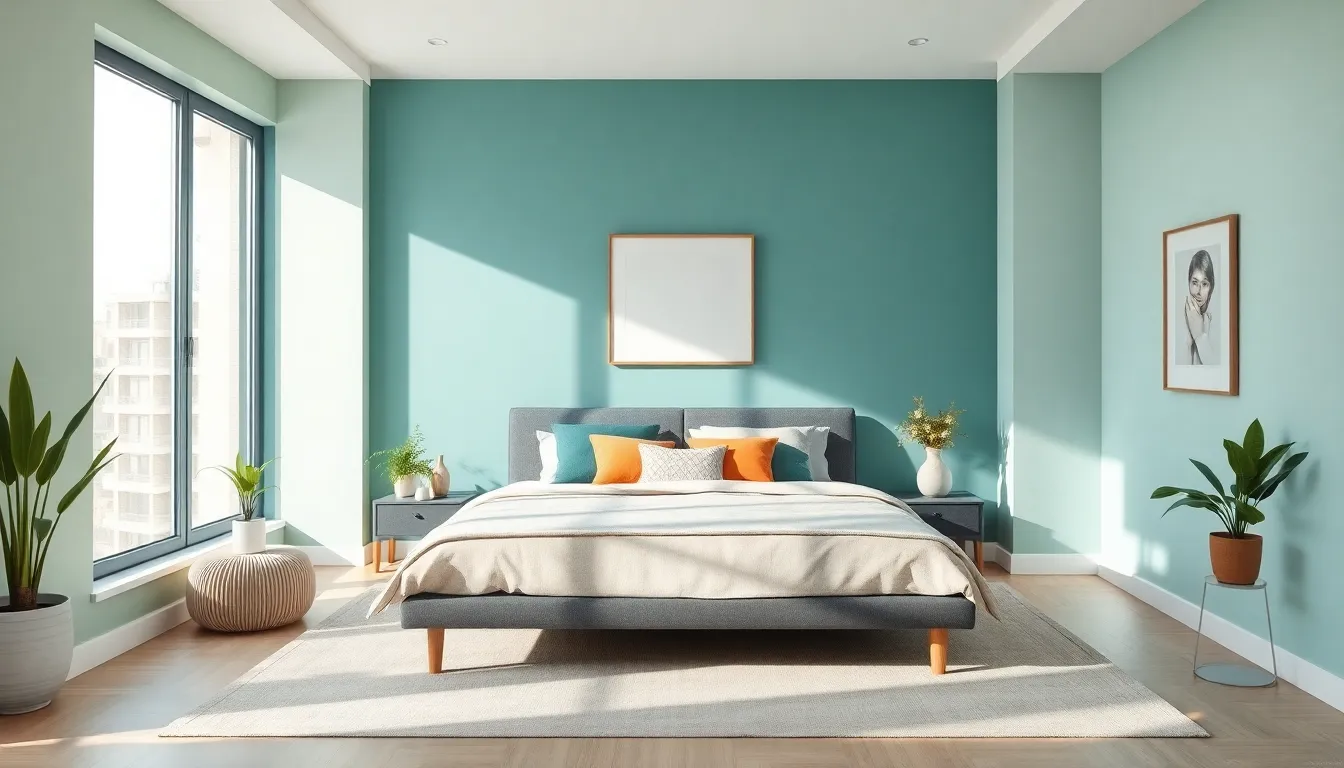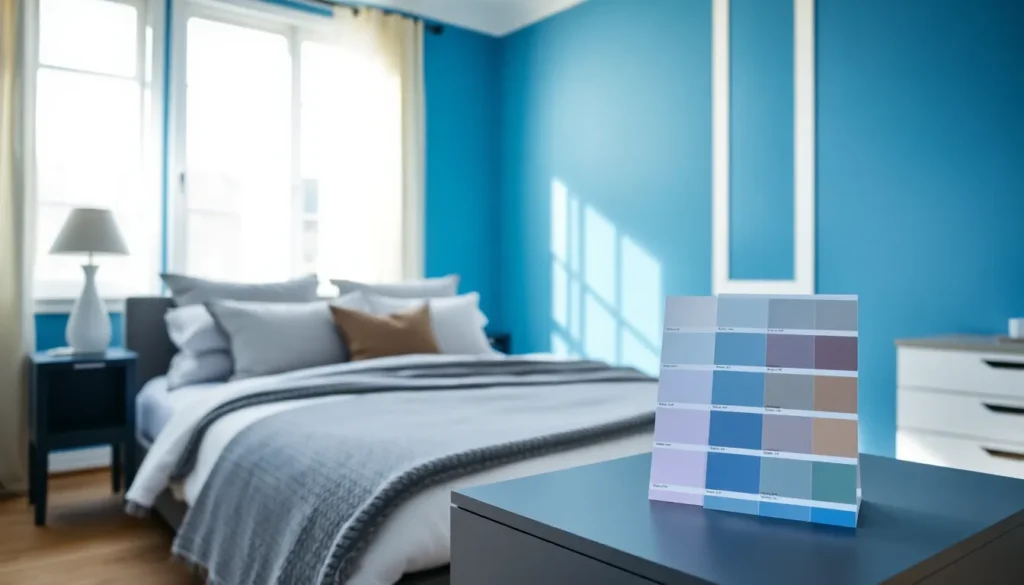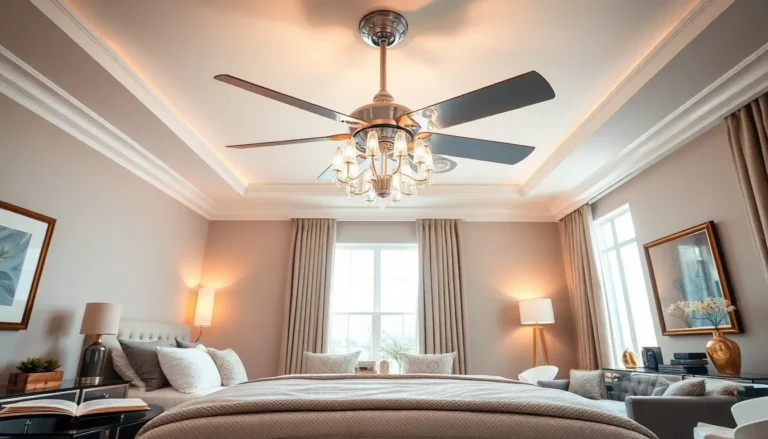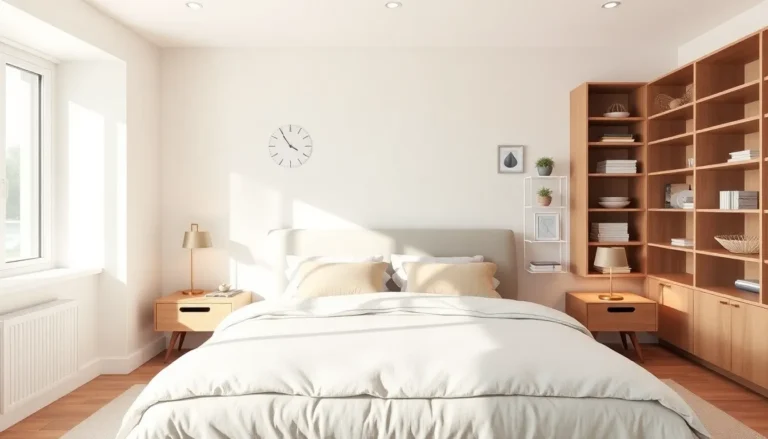Table of Contents
ToggleAre you tired of staring at those drab walls that have seen better days? Does your bedroom need a splash of color to boost your spirits? Choosing paint for bedrooms isn’t just a matter of picking your favorite hue: it’s a powerful decision that can transform your space and your mood. Lucky for you, we’ve compiled an essential guide to help you navigate the colorful world of bedroom painting. Grab a cup of coffee and get comfy, because we’re diving into the fun yet practical aspects of bedroom paint selection. Let’s make your sanctuary the envy of all your friends.
The Importance Of Color Psychology

Color psychology plays a crucial role in interior design, particularly in the bedroom, which is your personal retreat. Different colors evoke different feelings: for instance, soft blues and greens promote relaxation, while brighter shades like yellow can boost energy levels. It’s fascinating how a simple change in color can impact one’s mood and overall well-being. When selecting a paint color for a bedroom, it’s essential to consider what atmosphere you want to create. This is not just about aesthetics: it’s about crafting a space that reflects your personality and encourages serenity.
Popular Bedroom Colors And Their Effects
When it comes to popular bedroom colors, some have stood the test of time due to their calming or invigorating effects. Soft blue remains a top choice, known for its ability to promote tranquility. Not far behind is gentle green, which brings a sense of nature indoors, making you feel more grounded. Warm neutrals like beige or taupe are also favored for their versatility and timeless appeal. For those looking to inject some vibrancy, lavender and soft pink can add a soothing touch without overwhelming the senses. Finally, if you’re feeling bold, a deep navy or charcoal can add sophistication and coziness, perfect for creating a serene retreat.
Choosing The Right Finish For Bedroom Paint
Choosing the right finish for bedroom paint is just as vital as selecting the color. A matte finish can hide wall imperfections and gives a soft appearance, while an eggshell or satin finish provides a slight sheen and is more durable – great for areas that may require a bit more washing. If you have children or pets, consider using a semi-gloss or glossy finish, as they withstand scrubbing. Just imagine trying to clean up those inevitable crayon marks. Eventually, the finish impacts not only the look of the room but also its longevity and ease of maintenance.
Tips For Selecting The Perfect Shade
Selecting the perfect shade can be overwhelming, but it doesn’t have to be. Start by looking at your existing furniture and décor. By considering the elements already in the room, you can find shades that complement rather than clash. Don’t forget to sample. Testing paint strips on your walls allows you to see how colors look in various lighting throughout the day. Natural light versus artificial light can dramatically change the appearance of a color. Finally, remember that bold choices can add personality, while softer shades create an inviting atmosphere. Balance is key.
How To Prepare Your Bedroom For Painting
Preparing your bedroom for painting is crucial for achieving the best results. Begin by removing any furniture or covering it with drop cloths to prevent accidental splatters. Next, remove any wall decorations, outlet covers, and switch plates. If you’ve got old paint that’s peeling or cracking, now is the time to scrape and sand those areas. Finally, give the walls a thorough cleaning with soap and water, allowing for better paint adhesion. Following these steps will not only make your painting experience smoother but also help ensure a professional finish.
Maintenance And Touch-Up Tips For Bedroom Paint
Maintaining your newly painted bedroom is essential for keeping it looking fresh. Regular cleaning of the walls with a damp cloth can help avoid buildup dust and grime. When it comes to touch-ups, always save a small amount of leftover paint for minor repairs. If you notice any scuffs or marks, use a small brush for precise application. For larger areas needing repair, feathering the edges ensures a seamless look instead of a noticeable patch. And remember, keeping the room well-ventilated can prevent moisture buildup, which can affect the paint’s longevity.







